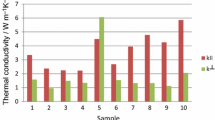Abstract.
The acid-generating potential of rocks depends on their sulfur content and neutralization potential (NP). Fifty-five "monomineralic" samples have been assessed for their NP contributions and for the effect of compositional variations in mineral series. For a threshold value of 20 kg CaCO3 equivalent per tonne of material, most rock-forming minerals, including pyroxenes, amphiboles, feldspars, micas, chlorites, and clays, will contribute insufficient NP to attain or surpass the threshold value. Although sample-to-sample variations in NP seem to be as significant as compositional variations within most series, the highly calcic members of the plagioclase feldspars yield more NP than the sodic members. The few high-NP results obtained from silicates–aluminosilicates were in most cases traceable to contamination by carbonates. Olivine and wollastonite were exceptions, and the latter gave NP values approaching those of some carbonates. The NP increases as the particle size becomes finer, but normalization of the NP values to m2/g may yield misleading results; for example, a fivefold increase in surface area will likely increase the NP by only 5±3 units of CaCO3 equivalent.
Similar content being viewed by others
Author information
Authors and Affiliations
Additional information
Electronic Publication
Rights and permissions
About this article
Cite this article
Jambor, .J., Dutrizac, .J., Groat, .L. et al. Static tests of neutralization potentials of silicate and aluminosilicate minerals. Env Geol 43, 1–17 (2002). https://doi.org/10.1007/s00254-002-0615-y
Received:
Accepted:
Issue Date:
DOI: https://doi.org/10.1007/s00254-002-0615-y




